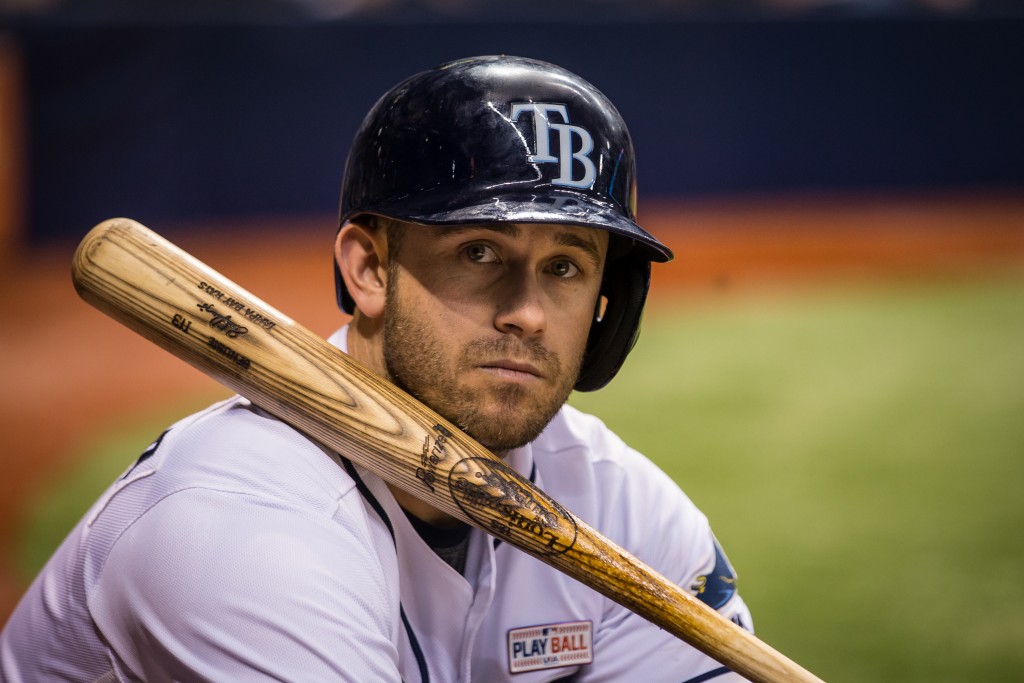
Tuesday, 4 a.m.
Personally, I still miss Evan Longoria. I miss his perspective. I miss his approach. I miss the way he measured up to the big moments.
But, no, I don't miss him 18.6 million dollars a year.
I miss David Price, too. I miss watching him blossom as a young player, his future as alive as his fastball. I miss the stories he told on those occasions he wasn't slightly ticked off at the world. I miss the way he could dominate.
But, no, I don't miss him 32 million dollars a year's worth.
Content beyond this point is for members only.
Already a member? To view the rest of this column, sign in using the handy "Sign In" button located in the upper right corner of the GarySheltonSports.com blog (it's at the far right of the navigation bar under Gary's photo)!
Not a member? It's easy to subscribe so you can view the rest of this column and all other premium content on GarySheltonSports.com.
And that 's the thing you have to admire about the Tampa Bay Rays. No, they are not perfect (Yoshi?), but they're pretty darned smart, and in major league baseball -- especially with the Rays' nickel-and-penny budget, knowing when to turn loose of a player is as big as deciding to hang onto him.
Again, the Rays aren't knocking at Mensa's door. No one can explain the salaries given to Kevin Kiermaier or Brandon Lowe.
But give the Rays credit for this: They know when to walk away from the negotiating table. They're pretty good at telling when a player is headed toward a decline.
Take Longoria, the best player (just ahead of Carl Crawford) this franchise ever had. Longo, who just went on the injured list with a shoulder injury (he could be there 4-6 weeks). Longo was having a nice little season, hitting .280 and leading the Giants.
But in the four years since Longoria has left the Rays, he's been a .253 hitter. And over that span, he's made more than $61 million. There are $32 million more on his contract. The Rays wanted away from that contract so badly they have pitched in $2 million a year toward his salary.
Then there is Price, who has been a very good pitcher since he left the Rays. But he's never been the pitcher he was while he was here. This year? He has one win for the Dodgers. One.
There are other examples. Tommy Pham, old laser eyes, is making 8.9 million a year. He 's hitting .223 for the Padres. Alex Cobb is 4-2 for the Angels. He's making 15 million a year. Nathan Eovaldi is having a fine year in Boston at 7-2. But is he worth $17 million a year?
That's the key to winning the money game. You have to know when to walk away from Travis D'Arnaud's contract, from Wil Myers', from Wilson Ramos'.
Oh, it isn't a popular way to do business. Fans develop a bond with their players over a season-long journey. No one wants to see their franchise deal away the guy whose jersey they're wearing.
With the Rays focused so hard on money, it is often hard on Rays' fans. Too soon, they saw Crawford leave, and James Shields, and Ben Zobrist. They bid farewell to Longoria, and Price, and Cobb. Some of that is baseball, where players switch teams all the time.
And part of it tears your guts out.
Take the two most controversial moves of last off-season. The Rays traded away Blake Snell and his $11.1 million contract. They let Charlie Morton go to the Braves rather than pay him $15 million. This year? Snell is 2-2 with the Padres. Morton is 5-2 with the Braves. Both of them have ERAs in the high fours.
Yes, you'd like to have them both on your roster. But can you blame the Rays for not paying the huge dollars for them?
Elsewhere, Matt Joyce is hitting .109 for the Phillies. Michael Perez is hitting .136 for the Pirates. Jake Bauers is hitting .190 for the Brewers.
The Rays seem to have grasped this. A player's most productive years come early. The big money comes afterward.
For the Rays, it usually comes elsewhere.